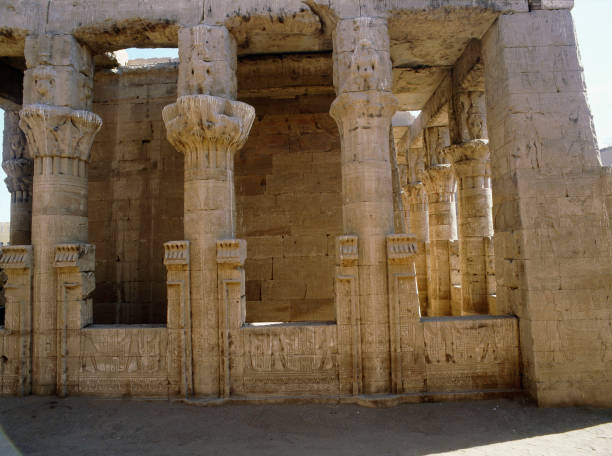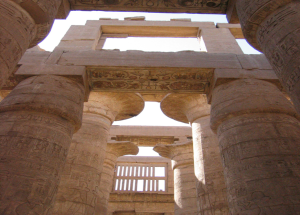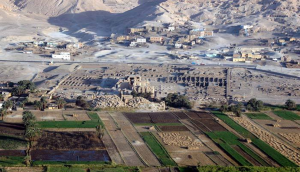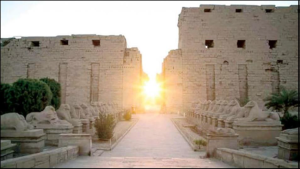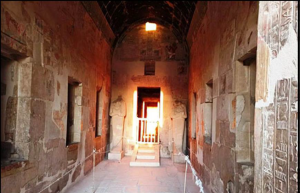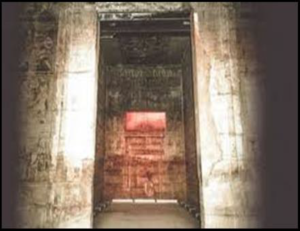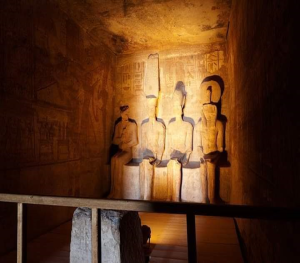Architecture in Ancient Egypt
The ancient Egyptian civilization influenced the architectural designs of many other civilizations, including the Greeks and Romans. Founding fathers of Greek geometry and architecture, such as Pythagoras and Euclid, learned their geometric theories from ancient Egyptian architecture. The ancient Egyptians were so advanced that they knew the geometric constant pi (π = 3.14), and they were familiar with concepts like radius, rectangle, square, and triangle. They used rulers and triangles in all their geometric operations. The ancient Egyptians were closely connected to the sun and the Nile River. They derived the concepts of renewal, rebirth, and eternity from the annual cycle of the sun and the Nile’s flooding. Architecture was closely linked to astronomy and the stars. They used astronomy and astrology to determine the exact location for building temples and tombs. Temples were oriented to align with specific celestial events or to mark the birth of a deity. Ancient Egyptian artists focused on building temples to honor and worship the gods and tombs to commemorate the deceased. Ancient Egyptian architecture, from its earliest periods, was characterized by simplicity, grandeur, and magnificence. All architecture in ancient Egypt was deeply rooted in the natural environment. For example, the columns used in temples were inspired by plants. The base of the column represented the plant’s roots, the cylindrical shape represented the stem, and the capital represented the plant’s bud. Therefore, capitals were often shaped like lotus or papyrus flowers. Similarly, the pylon, or facade of a temple, was inspired by the Eastern and Western mountains that flank the Nile River, which was considered the lifeblood of Egypt. The ancient Egyptians ensured the durability of their structures by increasing the thickness of the outer walls and giving them an inward slant at the top to withstand earthquakes. They also constructed spacious courtyards and towering columns.
Karnak Temple
The great hypostyle hall of Karnak Temple, showing the thickness of the upper wall being lower than the lower
The Phenomenon of Solar Alignment
For the ancient Egyptians, the sun symbolized both renewal and eternity. They observed that the sun rises every morning and sets every evening. They believed that when the sun sets, it rises in another world, the realm of the dead. From this belief, the concept of the sun aligning with the holy of holies of temples arose. This meant that the sun would renew life within the temple on specific dates. The annual phenomenon of solar alignment attests to the greatness of the ancient Egyptian pharaohs, who possessed a deep understanding of the sun’s movement. Each major temple had its unique dates for solar alignment, such as the temples of Karnak, Hatshepsut, Dendera, and Abu Simbel.
An aerial photo of the Ramesseum Temple clearly shows the design of the temple through the use of squares and rectangles in the design of the temple, West Bank, Luxor
Solar Alignment at the holy of holies of Karnak Temple
The Karnak Temple complex is one of the largest architectural structures in the history of Egypt. Construction began approximately 2000 years ago and continued throughout the New Kingdom and into the Roman period. The temple was dedicated to the Theban triad: Amun, whose name means “the hidden one,” his wife Mut, meaning “mother,” and their son Khonsu, the moon god. The solar alignment occurred on the 21st or 22nd of December each year. On this day, the day was at its shortest and the night at its longest. The sun would align with the statues of Amun in both Karnak Temple and Deir el-Bahri. This alignment was due to Queen Hatshepsut, who was the first to build in the holy of holies of Karnak Temple.
Solar Alignment at the holy of holies of Karnak Temple
Solar Alignment at the Holy of holies of Hatshepsut Temple
This temple houses a unique narrative: the divine birth story. In this narrative, Queen Hatshepsut establishes herself as the daughter of the god Amun-Ra. For this reason, the temple was built on a direct axis facing Karnak Temple, with only the Nile River separating them. This alignment caused both temples to experience the phenomenon of solar alignment simultaneously. Carved into the mountain, this temple is distinguished by its three terraces. The temple’s architect was a genius, ensuring that the sun aligned with Hatshepsut’s temple at the same time as it aligned with Karnak. The solar alignment occurs on December 9th each year. Queen Hatshepsut (1508 BC) was the daughter of King Thutmose I and Queen Ahmose. She assumed the throne after the death of her husband, King Thutmose II. She is considered one of the most famous and powerful female pharaohs to rule Egypt
Solar Alignment at the Holy of holies of Hatshepsut Temple
Solar Alignment at the Holy of holies of Dendera Temple
Dendera Temple was dedicated to the goddess Hathor, the goddess of love and motherhood. Although it was built during the New Kingdom, the current structure was constructed during the Ptolemaic period and completed by the Romans. This ancient temple was considered a place of miracles by the Egyptians, as Hathor was the goddess of love and motherhood. Women would visit to seek her blessings for marriage and childbirth. The temple is one of the most beautiful Egyptian temples, combining Egyptian, Greek, and Roman architecture. It contains depictions of many pharaohs and emperors, most notably Cleopatra, who had a building adjacent to the temple called Cleopatra’s Bath. The sun aligns with the holy of holies of this temple on November 8th and February 4th each year. This phenomenon coincides with the ancient Egyptian festivals of the god Horus, the husband of Hathor. The sun’s rays illuminate the birth chamber (mammisi) of the temple on the mornings of these days, symbolizing the birthplace of Horus.
Solar Alignment at the Holy of holies of Dendera Temple
The Solar Alignment at the Holy of holies of the Great Temple of Abu Simbel
The phenomenon of the solar alignment at the Great Temple of Abu Simbel is considered the greatest astronomical phenomenon known to the ancient Egyptians. This temple, carved into the rock, experiences a solar alignment for 40 minutes each year on the same dates: October 22nd and February 22nd. These days coincide with the king’s birthday and coronation day. Even after the temple was relocated from its original site by UNESCO in the 1960s and 1970s, the phenomenon continues to occur annually. Uniquely, the holy of holies houses four statues representing King Ramses II and the deities Amun-Ra, Ra-Horakhty, and Ptah (the god of the dead). The sun shines on the faces of all the statues except for Ptah, as he is the god of the dead. The temple was built by the great king Ramses II (1279-1212 BC), one of the most important pharaohs of ancient Egypt. He ruled for 67 years and had 90 children. He married more than 60 women, but his one true love was Queen Nefertari, for whom he built a beautiful temple at Abu Simbel. Inscribed on her temple is the immortal phrase: “I built this temple for the woman for whom the sun rises.”
The solar alignment illuminates the faces of Ramses II and the deities seated beside him in the holy of holies, except for the god Ptah, in the temple of Abu Simbel.

